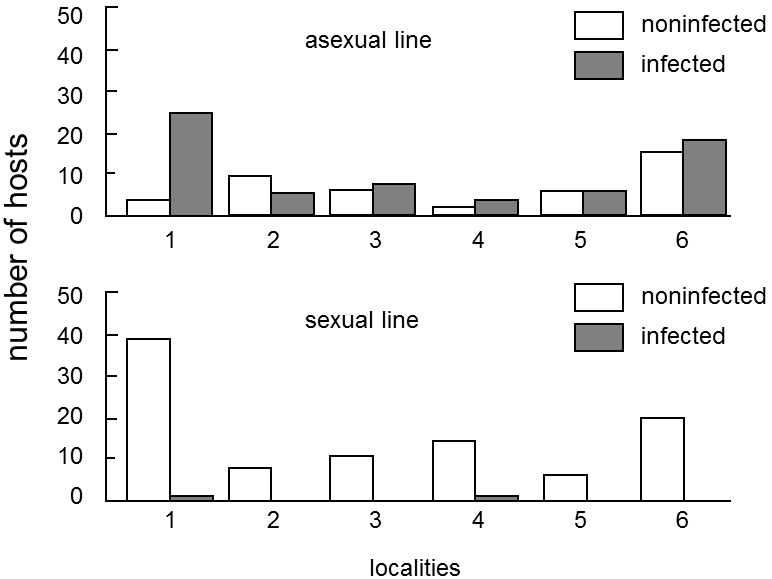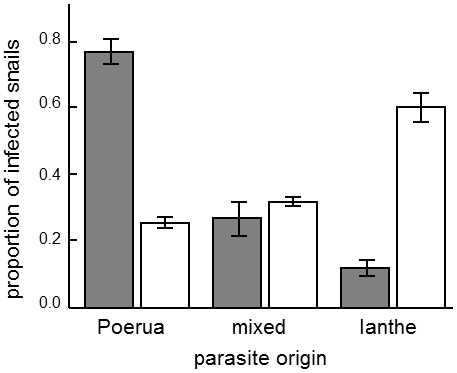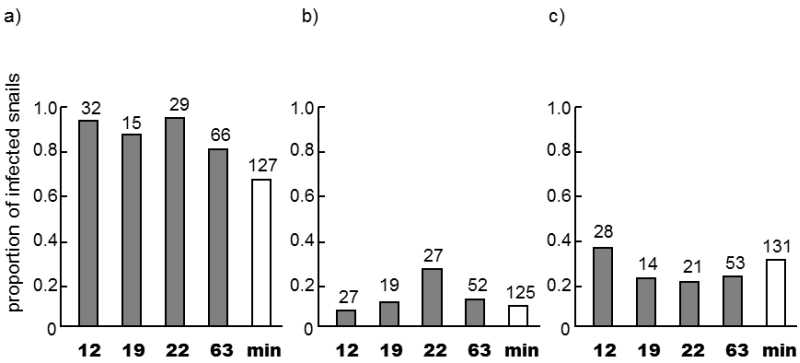XIII.3.2.2.3 The negative heritability of fitness model points to the fact that under certain conditions it is useful to be as different from one’s parents as possible
The negative heritability of fitness model is basically a sort of application of the Red Queen evolutionary principle (van Valen 1973; Bell 1982).This principle, named after the Red Queen’s Race in Lewis Carroll’s “Through the Looking Glass”, states that, in some situations, it is necessary to run as fast as you can to stay in the same place.In order to move forward, it is not enough to just run, but it is necessary to run faster than the others.The hypothesis takes into consideration the fact that, in an environment in which biotic factors, especially parasites and predators, are responsible for most of the selection pressure, it is frequently advantageous to differ from one’s parents and from most of the other individuals of the same species.Experimentally, it has been repeatedly confirmed that genetically more diverse sexually reproducing organism are much more resistant to parasites than their asexually reproducing competitors (Fig. XIII.10 and Fig. XIII.11).

Fig. XIII.11 Prevalence of infection by parasitic ticks in parthenogenetic and sexually reproducing geckos. The percentage of individuals in a population infected by ectoparasitic ticks (prevalence of infection) was monitored for parthenogenetic and sexually reproducing geckos classified in the Heteronotia binoei species complex. It is apparent that the number of infected individuals at all six localities was much lower for sexually reproducing geckos (lower graph) than for parthenogenetic geckos (upper graph) According to Moritz et al. (1991).
Extremely high pressure of this kind is exerted by parasitic organisms, bacteria, viruses and eukaryotic parasites (Hamilton, Axelrod, & Tanese 1990).It has been documented that a population of host organisms can be decimated by its parasite and only a few resistant individuals can survive the epidemic.In the following generation, they lead to the establishment of a new population of individuals that are resistant to the original strain of the parasite but, because of their uniformity (they come from only a few ancestors) can easily become the victims of another epidemic wave of a mutated parasite.Simultaneously, compared to their hosts, parasites are exposed to much stronger selection pressure on a change in their properties, for example, a change in the antigen properties of the proteins that are the target of the immune response of the host.In addition, they almost always have a shorter generation time than the host, so that their microevolution usually proceeds faster than evolution of the host.Thus, the parasite constantly maintains an advantage over its host in the co-evolutionary battle.This is manifested, for example, in that a host can be most readily infected by parasites derived from the same location (Fig. XIII.12).

Fig. XIII.12 Increased sensitivity of abundant species of water snails Potamopyrgus antipodarum towards infection by local phyla of fluke worms of the Microphallus genus. In the experiments, the snails were infected with fluke worms derived from the same lake or from a distant lake or hybrid fluke worms from both lakes (Poerua and Ianthe). It is apparent from the graph that the parasites are capable of more readily infecting snails originating from the same lake than snails originating from a distant lake. The heights of the columns correspond to the fraction of infected individuals and the length of the section corresponds to the mean error of the average calculated from four experiments. According to Lively and Dybdahl (2000).
The only effective counter-strategy of the host consists in the production of diverse progeny, as this is the only way to ensure that at least some individuals survive the succession ofwaves of the epidemic.Simultaneously, resistance to epidemics exhibits marked negative heritability.Parasites in the new wave of the epidemic are generally better adapted to the most common variant of the host, i.e. the one that was most resistant in the last epidemic (Fig. XIII.13).

Fig. XIII.13 Negative heritability of fitness. Freshwater snails Potamopyrgus antipodarum were exposed to experimental infection by fluke worms of the Microphallus genus. When the snails and fluke worms originated from the same lake, the representatives of four majority clones of snails (12, 19, 22 and 63) were far more sensitive to the infection that a mixed population of approx. 100 minority clones of snails (min), which together corresponded to about half the snails in the lake (a). However, when the snails were infected with fluke worms originating from a lake 80 km away (b) or hybrid fluke worms originating in both lakes (c), no significant difference was found between the sensitivity to the infection of the representatives of the majority and minority clones. In accordance with the Red Queen principle, these results demonstrate the negative heritability of fitness – the commonest snail clones are most susceptible to attack by local parasites. The numbers above the individual columns correspond to the number of snails examined. According to Lively and Dybdahl (2000).
